Introduction: Understanding the Intersection of Copyright Law and AI Data Training in the UAE
Artificial Intelligence (AI) innovation is accelerating rapidly across business sectors in the United Arab Emirates (UAE). As organizations harness machine learning to optimize operations, launch new products, and personalize digital services, the process of training these AI systems—the selection and usage of massive datasets—has taken centre stage. However, many such datasets contain works protected by copyright. The legal implications of using copyrighted works for AI training now demand careful attention, particularly with recent updates to UAE copyright legislation and heightened international focus on intellectual property (IP) rights in a digital age.
For UAE-based businesses, legal practitioners, and corporate leaders, understanding copyright compliance in the context of AI training is essential. New amendments to UAE Copyright Law, as reflected in Federal Decree Law No. 38 of 2021 and subsequent Cabinet Resolutions, have modernized the IP landscape, bringing fresh obligations and greater risks for non-compliance. This article provides comprehensive, consultancy-grade guidance, with practical recommendations for clients navigating these evolving legal waters. Whether you are steering enterprise-wide AI development or overseeing data governance policies, the insights below are tailored to support proactive compliance and innovation in the UAE.
Table of Contents
- Overview of UAE Copyright Law and Recent Amendments
- The Scope of Copyright Protection in AI Training Data
- Legal Framework for AI Training Data: Federal Decree Law No. 38 of 2021
- AI Training Scenarios and Copyright Issues in Practice
- Comparative Analysis: Previous and Current Copyright Provisions
- Case Studies: Compliance, Risks, and Resolutions
- Managing Risks: Robust Compliance Strategies for UAE Organizations
- International Developments and the UAE Perspective on AI and Copyright
- Best Practices for Copyright Compliance in AI Projects
- Forward-Looking Insights: The Road Ahead for Copyright and AI in the UAE
- Conclusion: Navigating Legal Uncertainty with Confidence
Overview of UAE Copyright Law and Recent Amendments
Background: The Rising Relevance of Copyright in Data-Driven Technologies
The UAE’s legal landscape regarding copyright has evolved to address new digital realities. The introduction of Federal Decree Law No. 38 of 2021 on Copyright and Neighbouring Rights repealed the earlier 2002 law, with the explicit aim to cover digital content, redress online infringements, and clarify exceptions relevant to technological innovation. The law is aligned with the UAE’s vision to become a global technology and innovation hub, ensuring adequate protection for creators, businesses, and users of intellectual property.
Key Legal Sources for Copyright Compliance
- Federal Decree Law No. 38 of 2021
- Cabinet Resolution No. 2 of 2009 on Implementing the Law of Copyright and Neighbouring Rights (where applicable)
- Ministerial Circulars and UAE Government Portal updates (see Federal Laws – UAE Government Portal)
In recent years, the UAE Ministry of Economy (which oversees intellectual property) has issued guidance focusing on copyrighted work in digital formats, specifically referencing the need for AI systems to comply with legal obligations. For businesses utilizing AI, knowledge of these regulations is vital for both day-to-day operations and strategic planning.
The Scope of Copyright Protection in AI Training Data
What Content is Protected?
Under UAE law, copyright applies to a broad range of “original works of authorship,” including literature, art, scientific materials, photography, audio, audiovisual, and digital works. Copyright does not only protect traditional media but also extends to digital publications, databases, compilations, and—by interpretation—large datasets and digital corpora used for AI training if they include copyright-protected elements.
Implications for AI Training Data
Much of the data needed for high-quality AI training (such as text, images, videos, or music) may be covered by copyright. Simply scraping publicly accessible online content or purchasing third-party datasets does not automatically confer the right to use that data for AI model development. The legal position is nuanced—especially in an environment as robustly regulated and innovation-forward as the UAE.
Key Definitions per the Law
- Works: Includes all intellectual productions in literary, artistic, or scientific domains, expressed in any manner (Article 2, Decree Law No. 38/2021).
- Database: A compilation of data, materials, or works arranged systematically (Article 2, definitions).
- Neighboring Rights: Rights for performers, producers, and broadcasting organizations relating to their performance or broadcasting content.
Legal Framework for AI Training Data: Federal Decree Law No. 38 of 2021
Core Provisions Impacting AI and Data Usage
Federal Decree Law No. 38 of 2021 sets out the main principles for copyright protection and introduces specific rules for digital content. Several articles are highly relevant to AI systems using third-party data, notably:
- Article 8: Exclusive rights of the author (including reproduction, adaptation, translation, and public communication).
- Article 9: Infringement by reproduction, distribution, or communication of the work to the public, including digital means, without authorisation.
- Article 17: Exceptions for use “without authorisation,” strictly limited to personal use, educational use, or research with clear boundaries.
- Article 31: Provisions on databases and digital compilations, which protect the structure and content selection.
- Articles 38–44: Civil and criminal sanctions for infringement, including damages, monetary penalties, confiscation, and potential imprisonment for serious offenses.
Practically, using copyrighted materials in AI training—unless an exception clearly applies or a license is secured—can expose an organization to liability, both as a primary actor and as an accessory to infringement.
Applicability to AI Dataset Creation and Processing
- When companies compile datasets from diverse sources (open web, publications, images), copyright subsists in many individual content items.
- Commercial use of AI models trained on such data (e.g., chatbots, image generators) may constitute reproduction, adaptation, or public communication under the law.
- “Text and data mining” exceptions (popular in the EU and UK) have no direct counterpart in current UAE copyright law. Accordingly, explicit consent or license is recommended.
Permissions, Licensing, and Exceptions
The safest strategy for organizations is to secure a written license, permission, or waiver from the rights-holder before using any outside work for data training, unless certain that a specific exception applies—such as content being out of copyright (public domain), or the use falling strictly within the educational or research carve-outs as prescribed in the Decree.
AI Training Scenarios and Copyright Issues in Practice
Scenario 1: Scraping Images for Machine Learning Models
A Dubai-based technology company wishes to train a computer-vision AI using publicly available images sourced from news outlets, blogs, and art platforms. Many of these images are copyright-protected. Under the 2021 law, copying—even for internal algorithm development—may infringe unless:
- The images are clearly in the public domain, or
- Explicit permission has been obtained, or
- The use qualifies for a narrow exception (e.g., for accredited educational research, with clear attribution and non-commercial intent).
Scenario 2: Using Textual Datasets for Natural Language Processing (NLP)
A financial institution is implementing an AI-powered customer service chatbot. It plans to use a text corpus consisting of articles, blogs, and manuals, partly acquired from open web sources. Each original text may be protected; use beyond “personal or internal study” is likely outside permissible exceptions. A commercial deployment would require examining the copyright status of each source and, where necessary, obtaining relevant licenses.
Scenario 3: Third-Party Dataset Procurement
Purchasing datasets from reputable vendors does not exempt an enterprise from liability if the vendor lacked the proper rights. Due diligence—including contractually warranting non-infringement and retaining indemnity—should be part of any procurement process.
Comparative Analysis: Previous and Current Copyright Provisions
| Provision Area | Federal Law No. 7 of 2002 | Federal Decree Law No. 38 of 2021 |
|---|---|---|
| Digital Content Protection | Implicit, limited direct coverage | Explicitly protects digital, online, and database works |
| Text & Data Mining Exception | Not addressed | No explicit exemption; exceptions limited to education, research |
| Scope of Infringement | Traditional forms emphasized | Includes digital transmission, online copying, AI-enabled use |
| Civil & Criminal Remedies | Available, but lower fines typically | Enhanced legal remedies; up to AED 100,000 in fines, possible imprisonment |
| Database Rights | Recognized, but less detailed | Broader database and data structure rights |
The above table (suitable for visual infographic placement) highlights the post-2021 landscape’s greater legal exposure for data-centric technology solutions, requiring heightened diligence in AI projects.
Case Studies: Compliance, Risks, and Resolutions
Case Study 1: Non-Compliant AI Startup
A UAE AI startup rapidly scraped thousands of blog articles to train a content summarization engine intended for enterprise clients. Without seeking authorization, it commercialized the tool. Following a legal notice from a rights-holder, the startup faced a shutdown order, civil monetary damages, and reputational loss. Swift retroactive negotiations and removal of problematic data resolved the immediate threat, but costs—including legal fees and business disruption—were substantial.
Case Study 2: Proactive Compliance by a Financial Institution
An Abu Dhabi bank set up an AI project team to develop a risk-assessment model. The legal department conducted rights clearance for all third-party content, engaged with multiple rights-holders to secure training licenses, and kept detailed records. In a later audit, the bank demonstrated full compliance, avoiding sanctions and setting an example for industry best practices.
Case Study 3: Hypothetical Public Domain Scenario
A university research group in Sharjah sought to train an AI on a set of pre-1925 Arabic literature, all of which had passed into the public domain. The project, conducted for non-commercial, educational purposes and duly attributing the authors, fell squarely within the exceptions, presenting a low risk profile under current law.
Managing Risks: Robust Compliance Strategies for UAE Organizations
Main Liability Risks and Compliance Failures
- Civil Sanctions: Fines up to AED 100,000 per infringement, court-ordered damages, and asset seizure.
- Criminal Liability: For deliberate commercial infringement, potential imprisonment and higher fines.
- Loss of Business Reputation: Especially in high-profile technology sectors and fintech, infringement can damage long-term trust and partnerships.
- Operational Disruption: Injunctions can halt projects, impacting rollouts and investments.
A Sample AI Copyright Compliance Checklist
| Step | Action | Outcome |
|---|---|---|
| Data Inventory | Catalogue all third-party sources, internal content, and dataset vendors | Clarity over material used |
| Rights Assessment | Identify copyright status for each source (licensed, public domain, unknown) | Informed risk analysis |
| Licensing | Obtain all necessary permissions; negotiate written training-data licenses | Legal certainty |
| Vendor Due Diligence | Scrutinize supplier rights; secure warranties/indemnities | Reduced procurement risk |
| Exception Review | Verify applicability of legal exceptions (educational, research, public domain) | Proper exception usage |
| Documentation | Maintain records of all permissions, communications, and decisions | Audit-ready compliance |
| Training & Policies | Educate employees, enforce an internal data governance policy | Sustained compliance culture |
International Developments and the UAE Perspective on AI and Copyright
Comparison: UAE and Global Best Practice
While jurisdictions like the European Union, United States, and Japan have debated or introduced tailored exceptions for text and data mining (TDM) by AI, the UAE’s approach remains cautious. There is, as of early 2025, no explicit “fair use” or TDM exception for AI training in the UAE. Instead, the onus is on the organisation to account for and address potential infringement risks.
| Jurisdiction | AI Data Exception? | UAE Perspective |
|---|---|---|
| EU | Directive 2019/790 permits TDM for research, with opt-out | No TDM provision; stricter enforcement |
| USA | Some precedent under “fair use”, but unsettled | No general fair use; specific exceptions only |
| UK | Permits TDM for non-commercial research | No matching exception |
| Japan | Permits TDM for AI regardless of purpose | No such blanket exception |
The UAE Policy Direction
The absence of a blanket TDM exception reflects the UAE’s intent to balance innovation with robust protection for creators. The government has signaled willingness to study AI’s economic impact; we may see further refinement of the law or administrative guidance as the AI economy matures.
Best Practices for Copyright Compliance in AI Projects
- Integrate legal review at every stage of AI project design, from data acquisition through to model deployment.
- Maintain transparent records of all datasets, their sources, copyright status, and permissions obtained.
- Engage in proactive dialogue with rights-holders and industry bodies to build custom licensing models when needed.
- Monitor legislative and regulatory developments—subscribe to Ministry of Economy bulletins and the UAE Legal Gazette.
- Institute staff training programs in copyright risk awareness as part of digital transformation strategies.
- Collaborate with specialist legal counsel for complex data or high-stakes ventures, especially cross-border projects.
Forward-Looking Insights: The Road Ahead for Copyright and AI in the UAE
Anticipated Developments and Future-Proofing Compliance
While the current law provides a firm foundation, the pace of change in AI and digital innovation will almost certainly drive further regulatory evolution. Stakeholders should anticipate potential:
- Introduction of clearer AI-specific copyright exceptions by legislative or Cabinet action.
- Greater cross-border cooperation and harmonization with Gulf Cooperation Council (GCC) and international IP standards.
- Implementation of dedicated registration systems or digital rights clearance platforms to streamline licensing.
- Escalating enforcement, with more rigorous government oversight and automated digital infringement detection.
In preparation, organizations are encouraged to invest in resilient, future-oriented compliance protocols—emphasizing not just technical solutions, but robust legal frameworks.
Conclusion: Navigating Legal Uncertainty with Confidence
The integration of AI into the UAE’s technological and business sectors brings significant promise, but copyright compliance when training AI with third-party data is becoming as critical as the technology itself. Recent amendments under Federal Decree Law No. 38 of 2021 signal the importance of respecting intellectual property in the digital age. Organizations that prioritize legal diligence—incorporating rights clearance, compliance checks, staff education, and ongoing monitoring—will not only avoid costly liabilities but also foster a culture of ethical digital innovation.
As new legislative guidance emerges and AI continues to evolve, UAE businesses are best served by taking a proactive, agile approach to copyright risk management in AI training. Engaging qualified legal counsel, staying engaged with government updates, and embedding IP considerations throughout your data strategy will be key to successful, compliant growth in 2025 and beyond.




